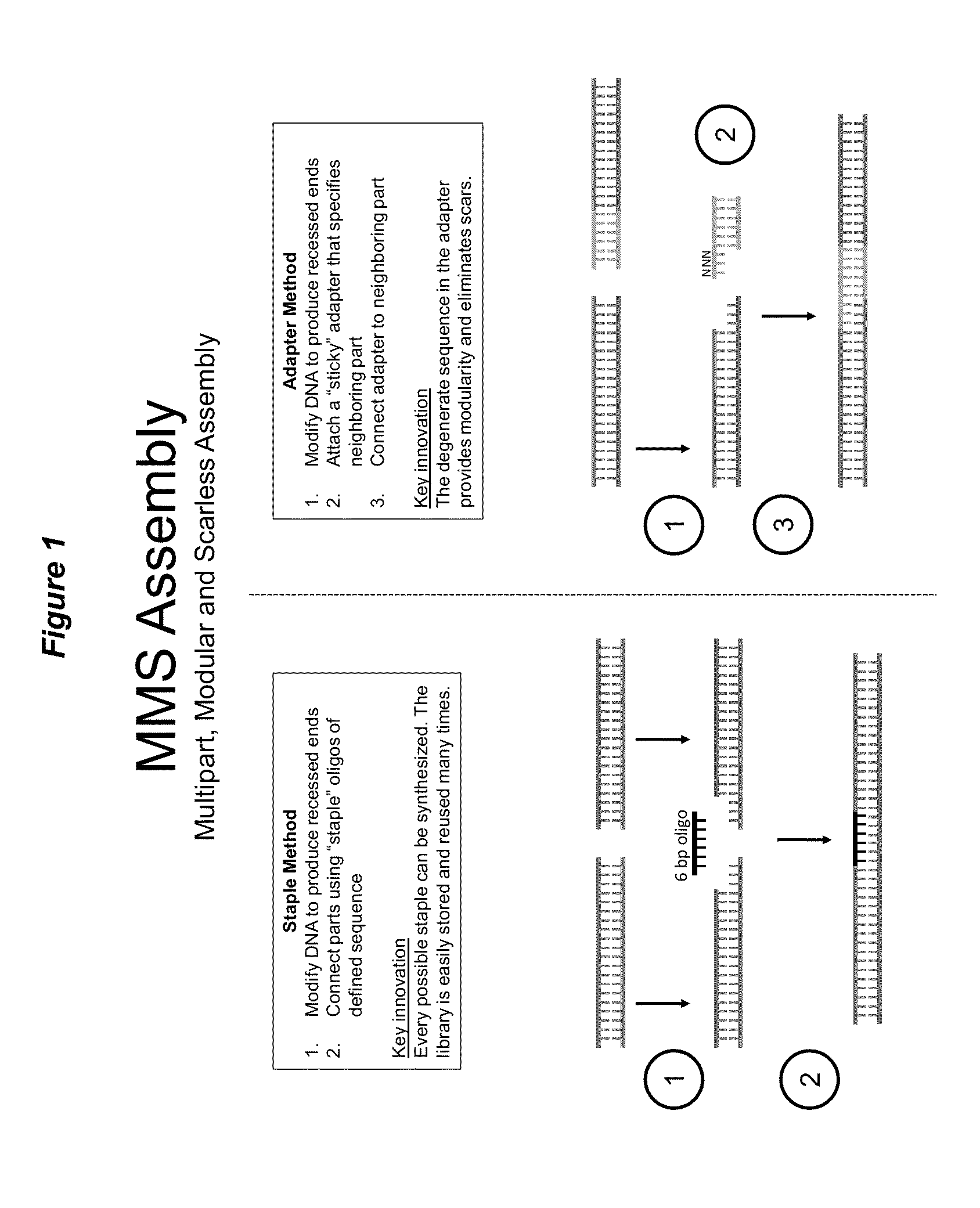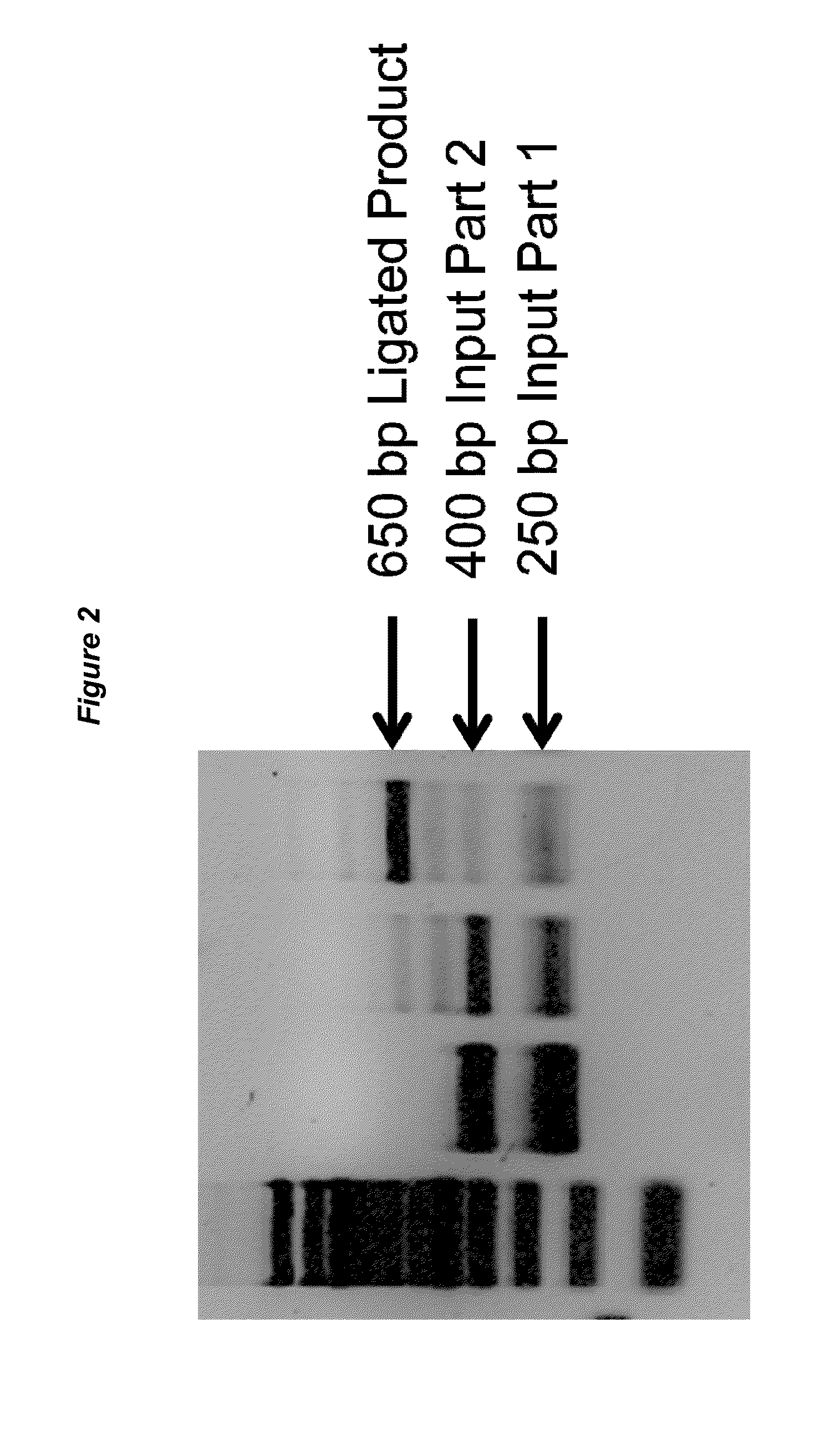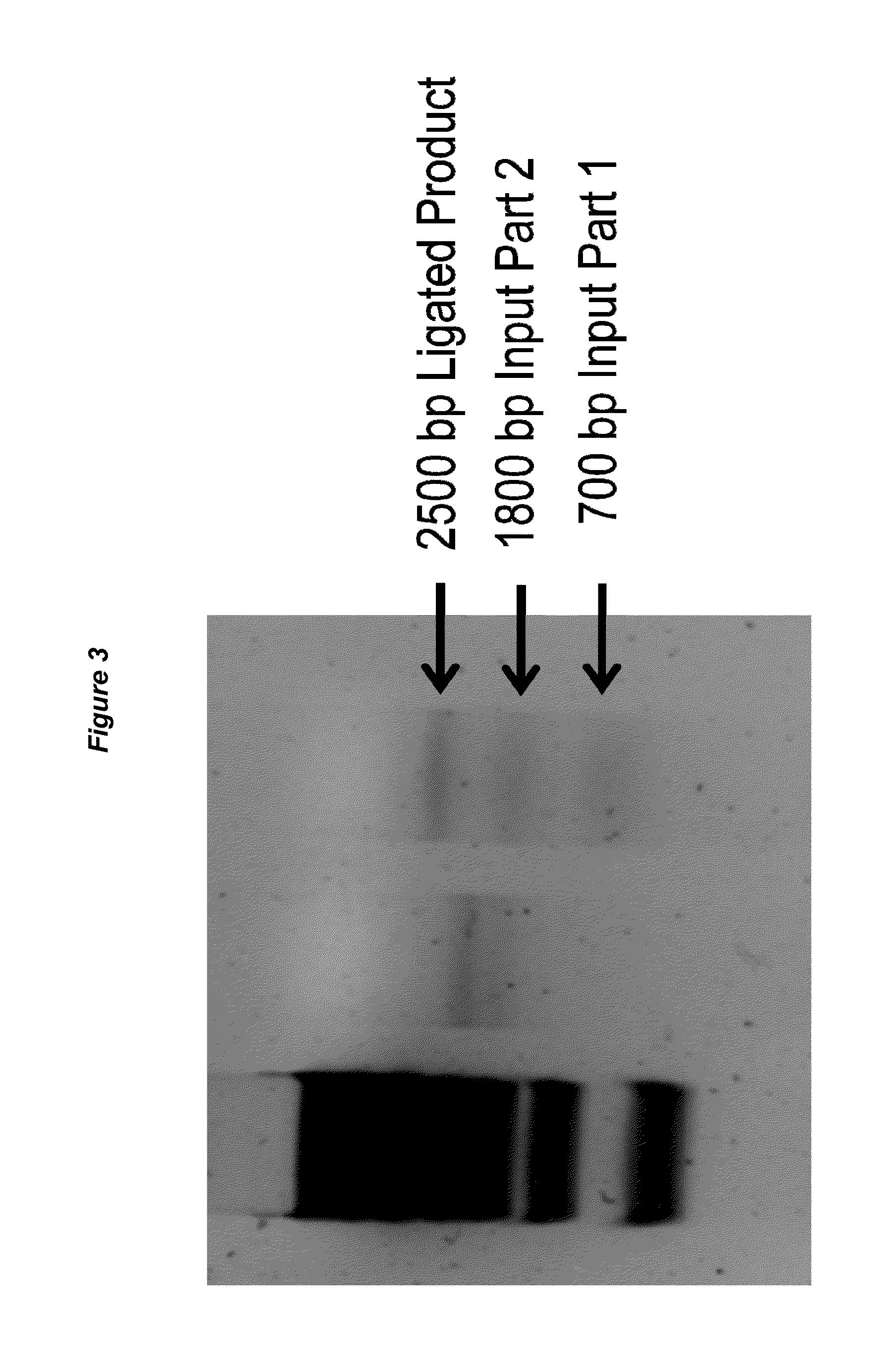Methods for multipart, modular and scarless assembly of DNA molecules
- Summary
- Abstract
- Description
- Claims
- Application Information
AI Technical Summary
Benefits of technology
Problems solved by technology
Method used
Image
Examples
example 1
Staple Method
[0067]One example of the methods is the “Staple Method.” DNA parts are prepared by digestion with Type IIs restriction enzymes to generate termini with 5′ and 3′ single stranded DNA overhangs. Most Type IIs enzymes create short single stranded DNA overhangs (about 2 bp to 6 bp). This results in a relatively small “gap” at the junction between two DNA parts. This “gap” can be filled by a defined oligonucleotide (i.e., staple linker) that is perfectly complementary to the generated single stranded DNA overhangs. The oligonucleotide spans the junction and anneals to both the 5′ single stranded DNA overhang of one part and the 3′ single stranded DNA overhang of the other part. More than two DNA parts can be simultaneously joined together, and the order of assembly will be dictated by the sequence of the oligonucleotides provided in the reaction. See, for example, FIGS. 1 and 2.
[0068]The staple method can also be employed in performing isothermal scarless subcloning. For iso...
example 2
Adapter Method
[0071]A second example of the methods is the “Adapter Method.” A dsDNA adapter (i.e., single stranded terminus adapter) is created for each part (linker paired part or LPP) such that it contains a single stranded DNA termini comprising degenerate bases, e.g. NNNN. The dsDNA sequence in the adapter can either duplicate the terminal sequence of the LPP, or it can serve as a replacement for the terminal sequence of the LPP. In the latter case, the LPP would be reconstructed to be a smaller size. In the “Adapter Method,” DNA parts are modified with restriction enzymes to generate single stranded DNA termini. The adapter corresponding to the desired neighboring part is then ligated to the single stranded DNA termini. Finally, the adapter is joined to its LPP. In the accompanying example, we utilized the second class of assembly (exonuclease based) to ligate the adapter to its LPP. See, for example, FIGS. 1 and 3.
[0072]It is understood that the examples and embodiments descr...
PUM
| Property | Measurement | Unit |
|---|---|---|
| Length | aaaaa | aaaaa |
Abstract
Description
Claims
Application Information
 Login to View More
Login to View More - R&D
- Intellectual Property
- Life Sciences
- Materials
- Tech Scout
- Unparalleled Data Quality
- Higher Quality Content
- 60% Fewer Hallucinations
Browse by: Latest US Patents, China's latest patents, Technical Efficacy Thesaurus, Application Domain, Technology Topic, Popular Technical Reports.
© 2025 PatSnap. All rights reserved.Legal|Privacy policy|Modern Slavery Act Transparency Statement|Sitemap|About US| Contact US: help@patsnap.com



